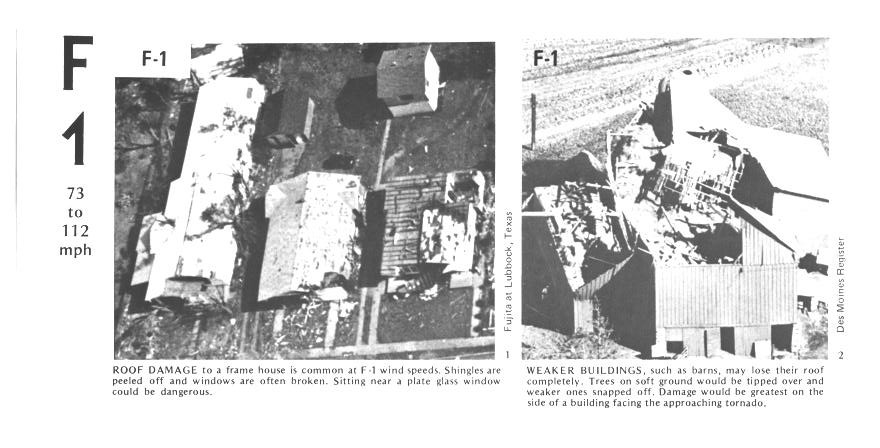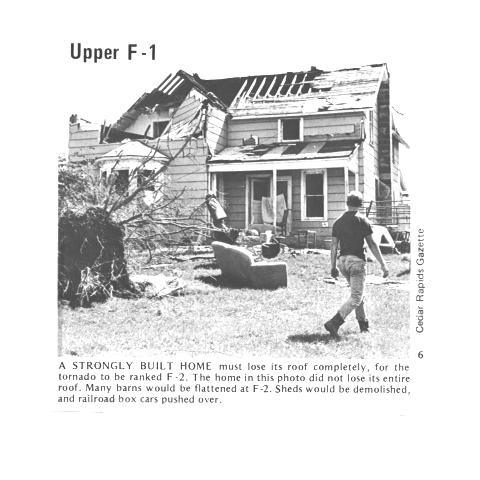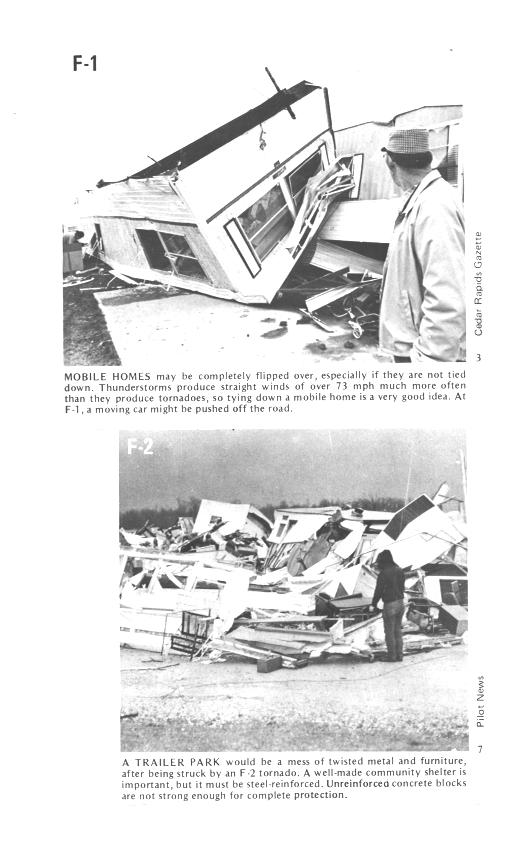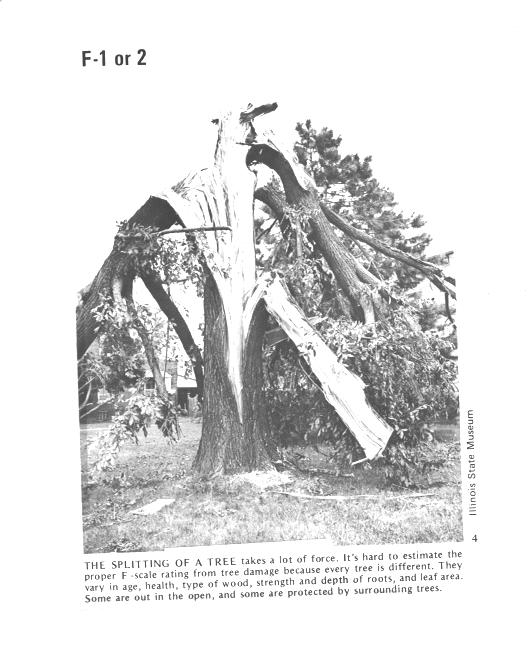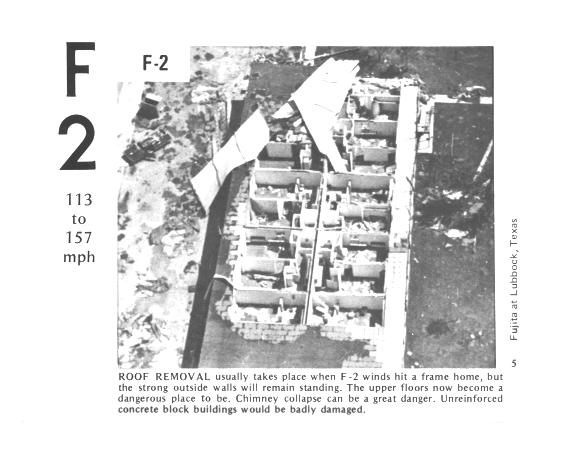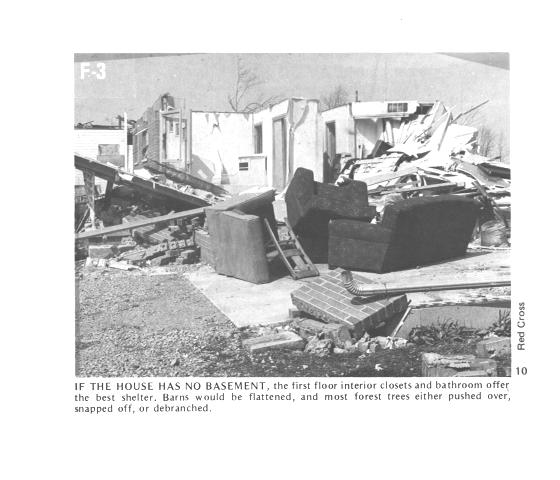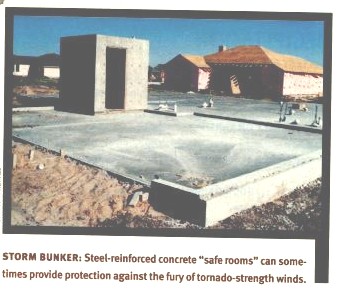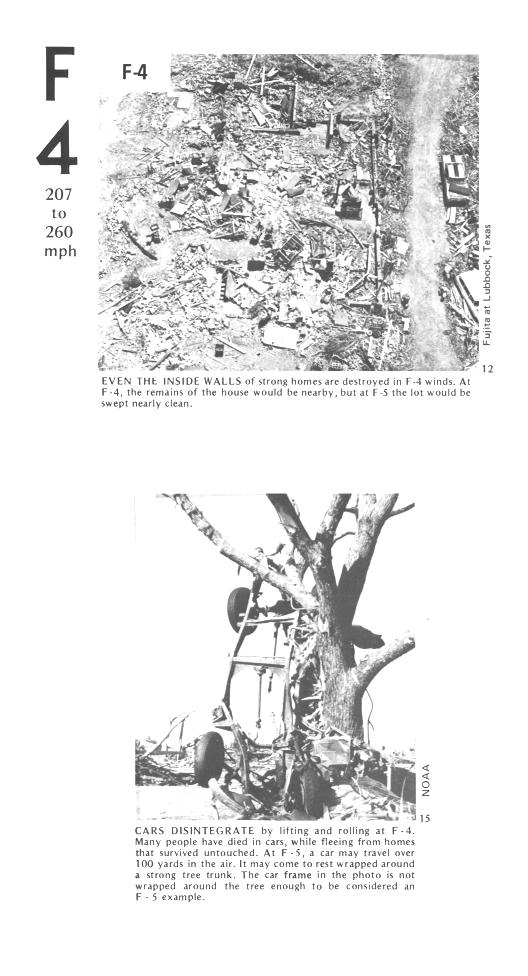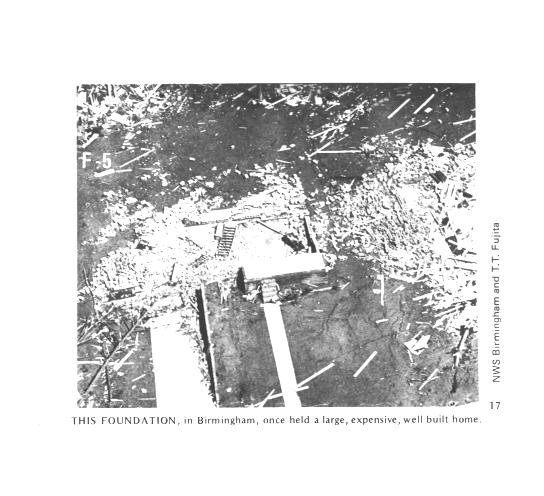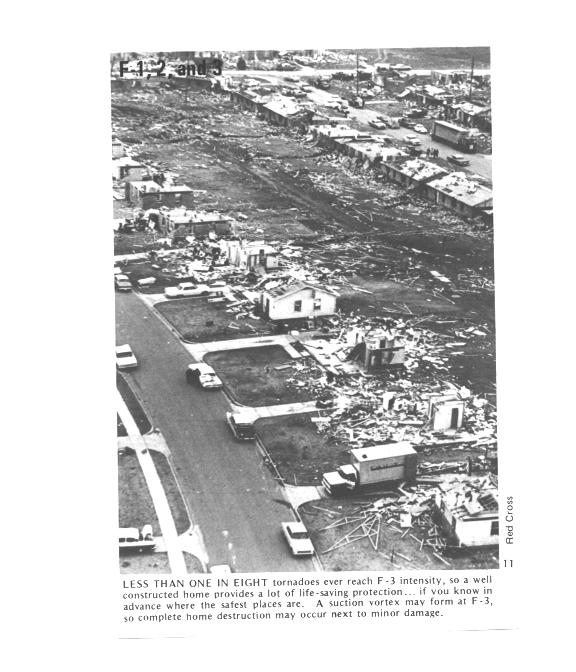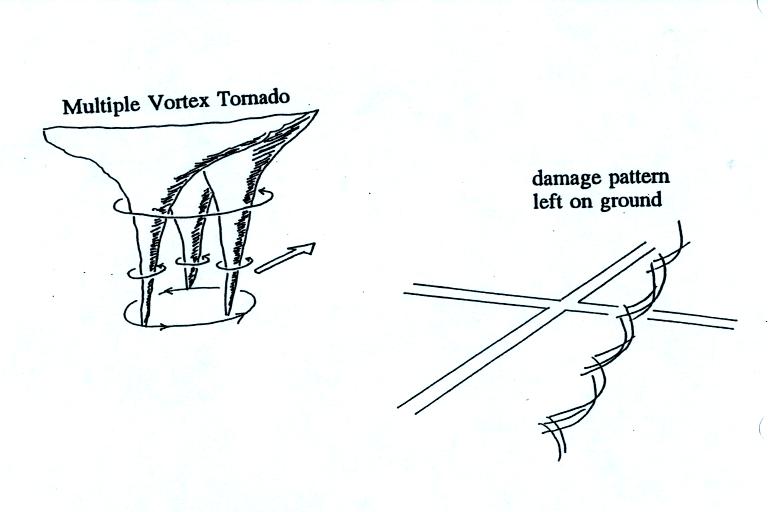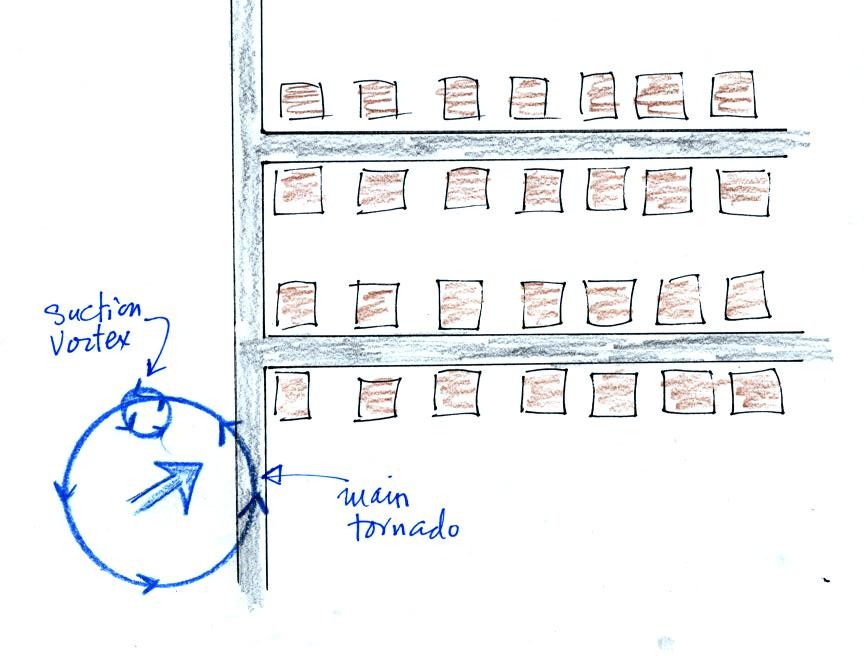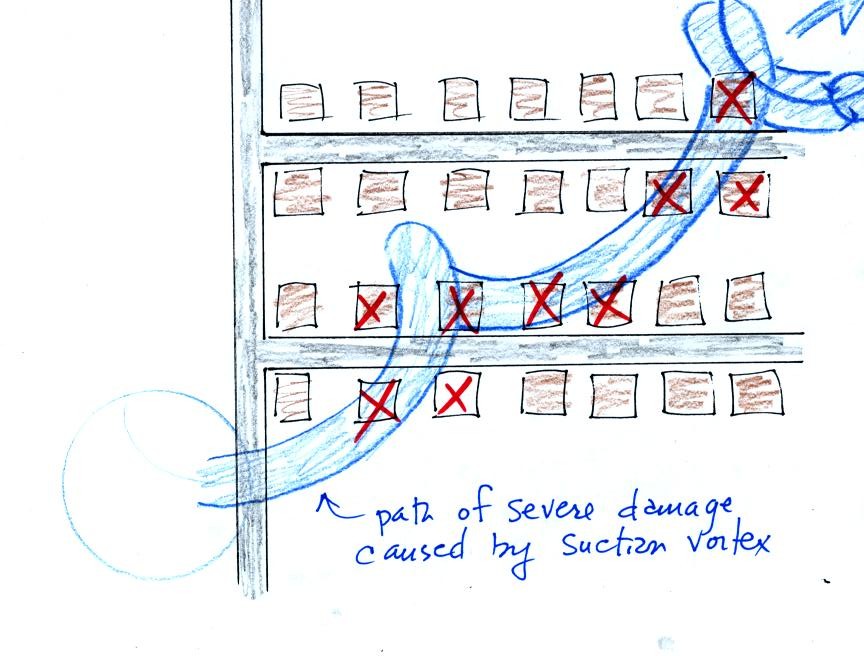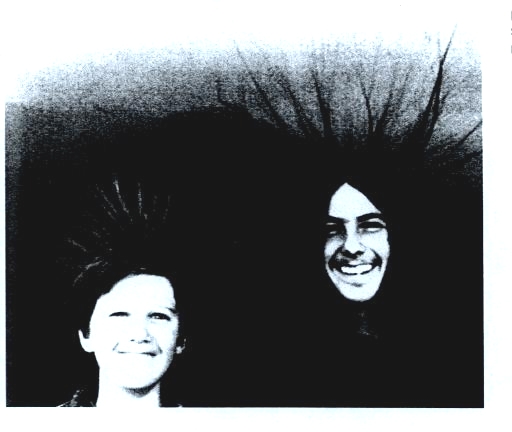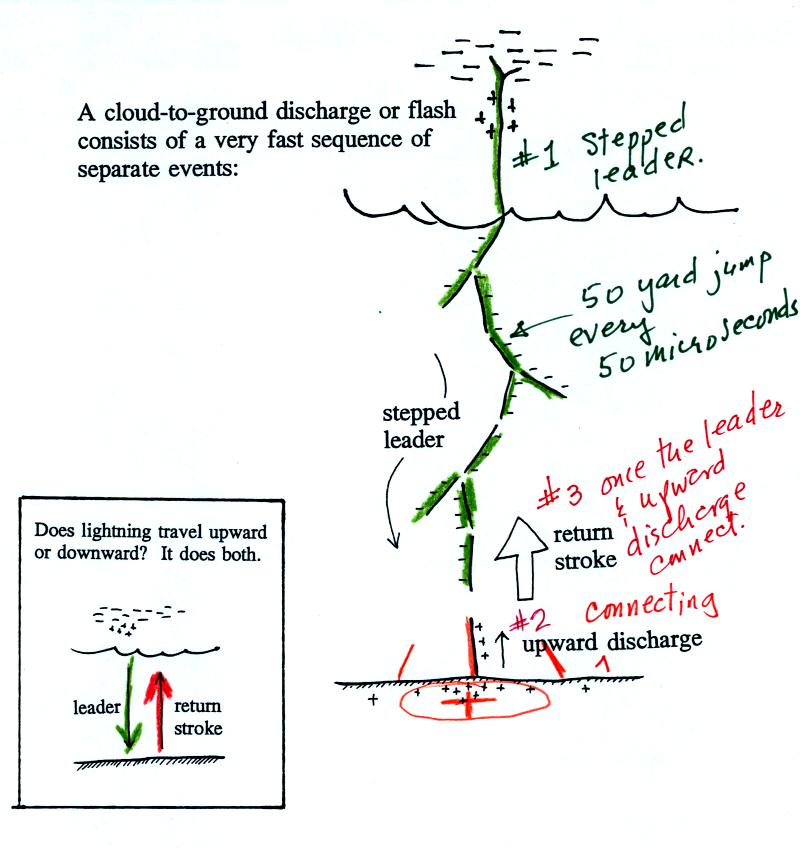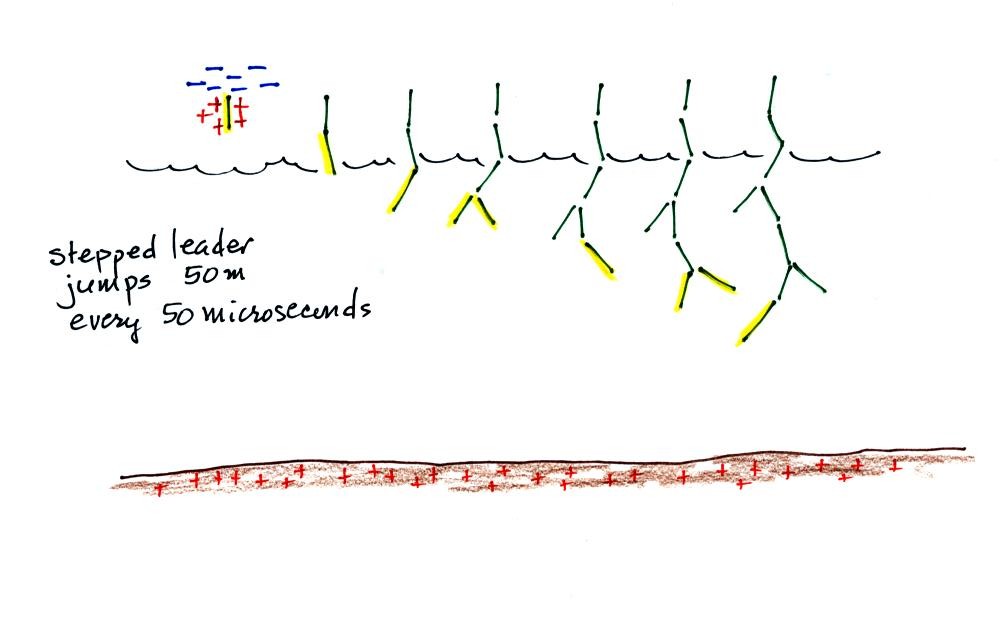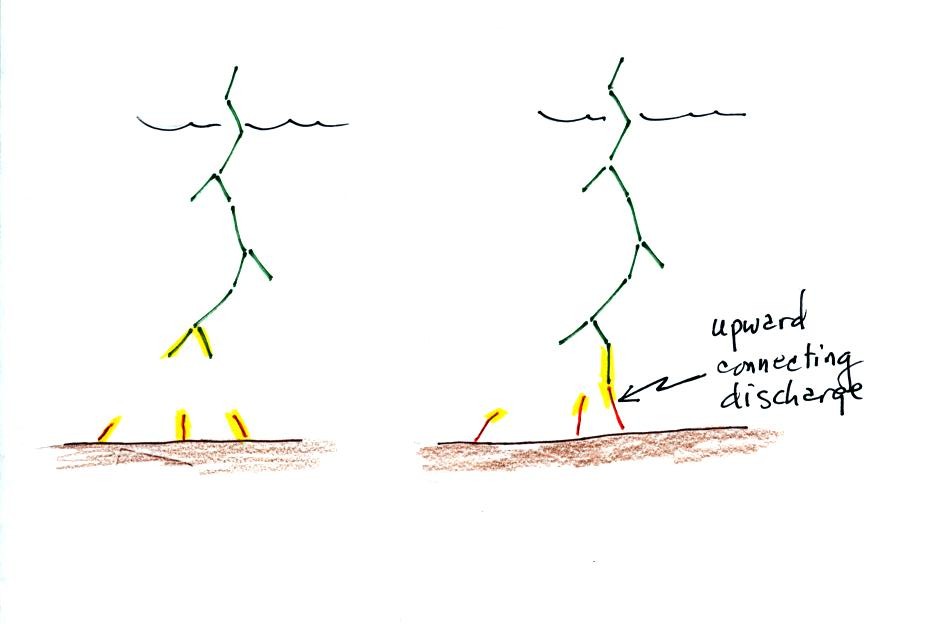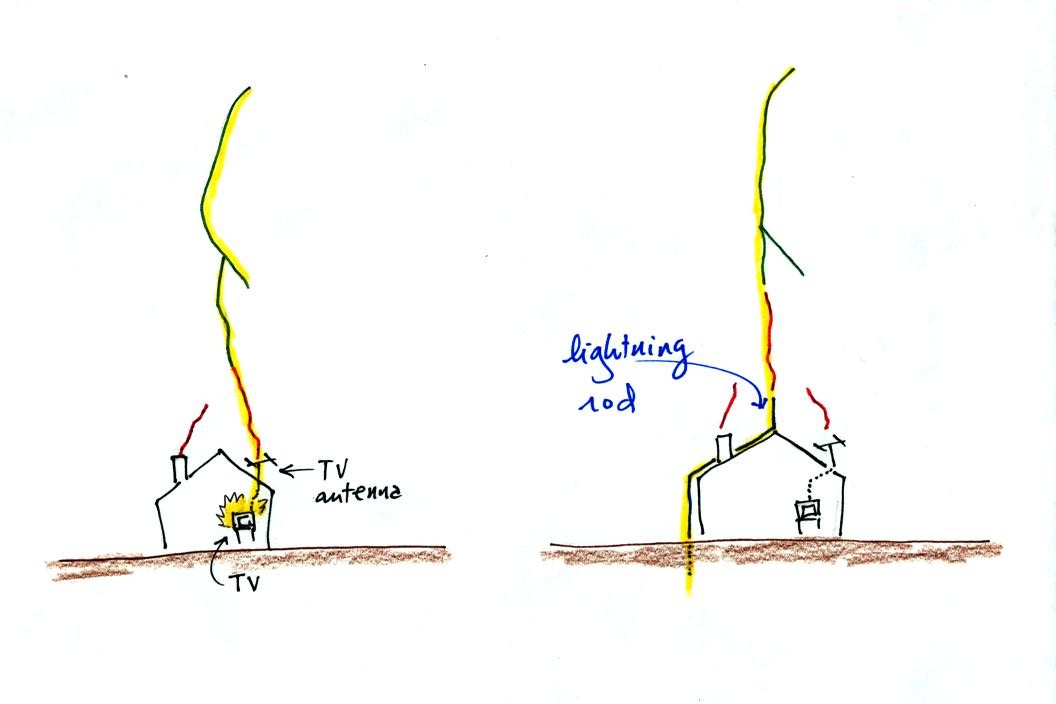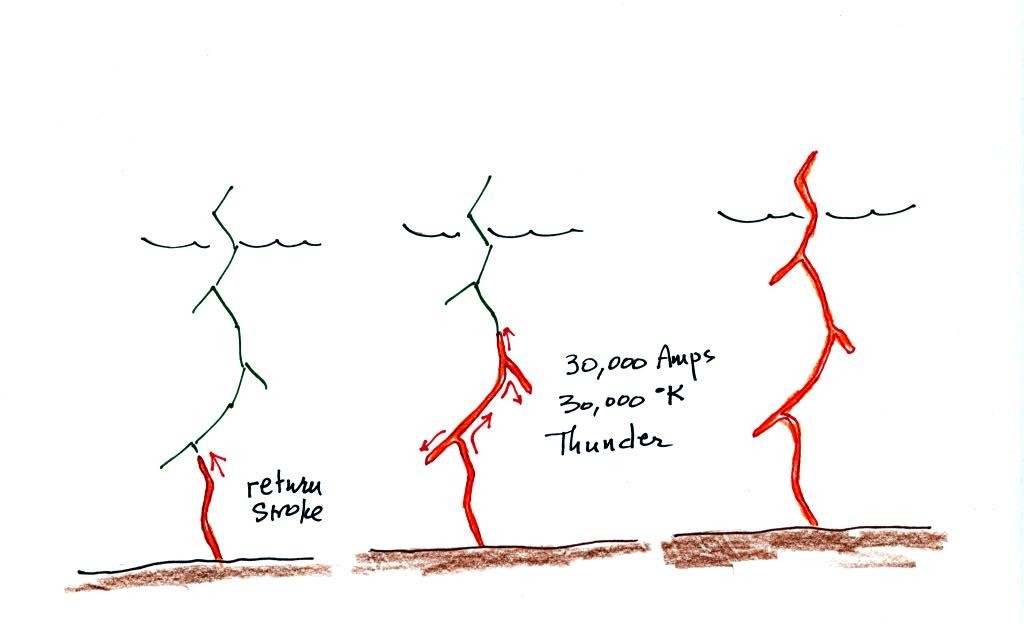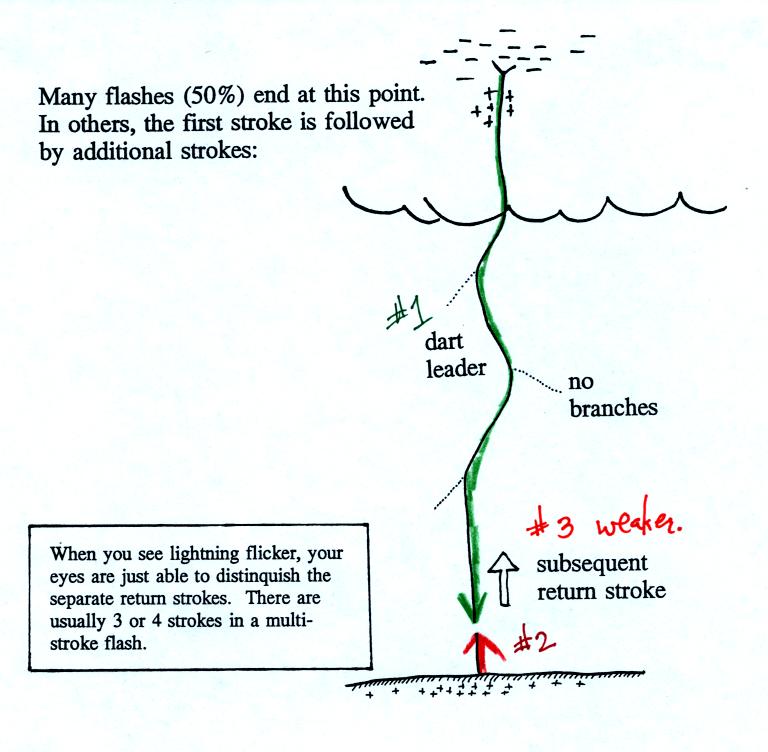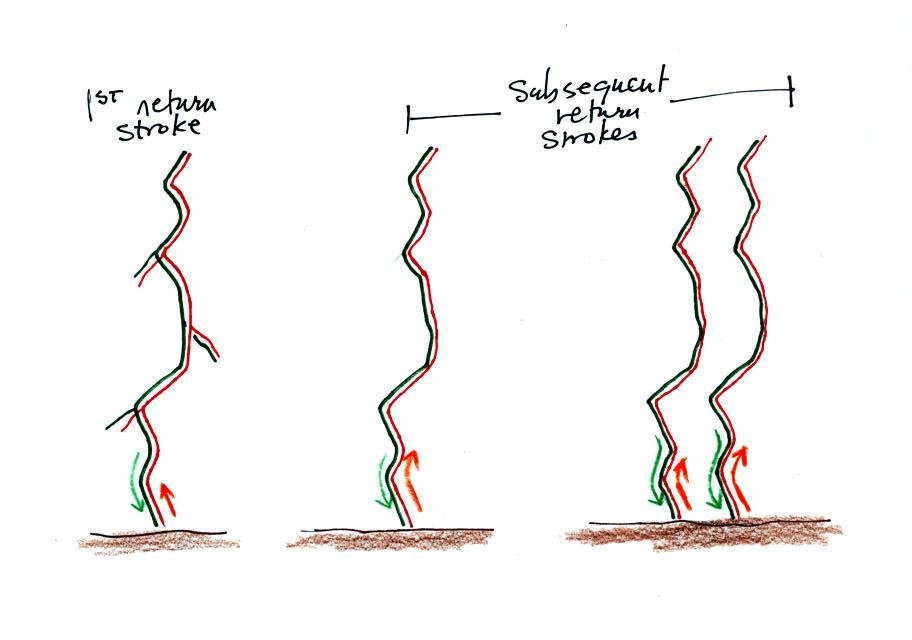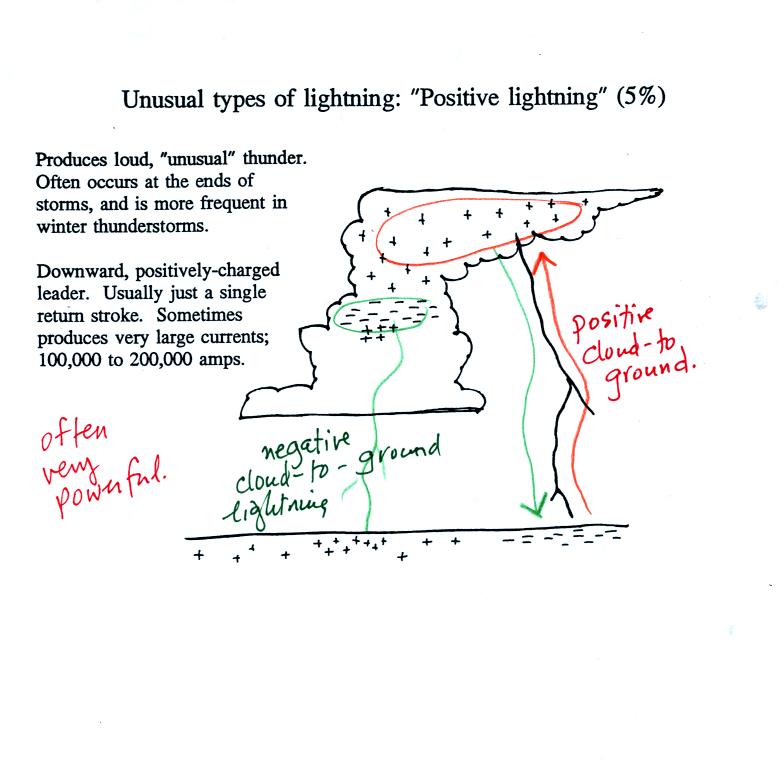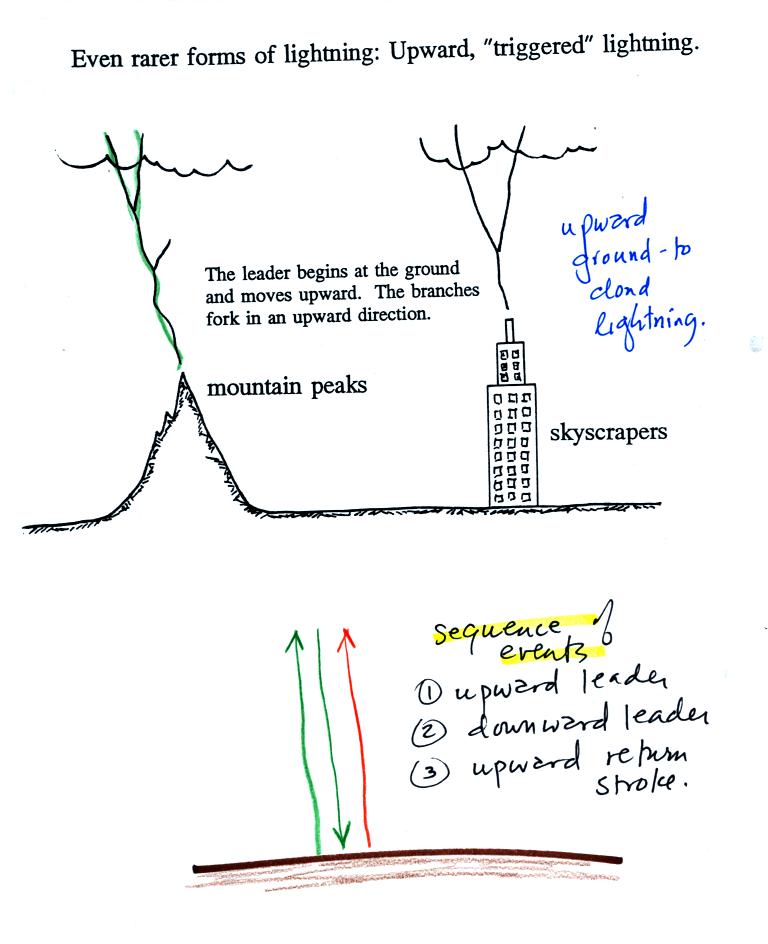Friday Apr. 23, 2010
click here to download today's notes in a more
printer friendly format
Three songs from Alison Krauss and Union Station ("The Lucky One",
"Ghost is This House", and "Faraway Land")
Some of the 1S1P Assignment #2 reports on The Green Flash have
been graded and returned today.
A little material on tornadoes to finish up before starting a new
section on lightning.
It is very hard to actually measure the speed
of the
rotating winds in a tornado.
Researchers usually survey the
damage caused by the tornado to come up with a Fujita Scale
rating.
Here are some representative photographs of
tornado damage
Roof damage is typical of an F1 tornado. The buildings on
the left suffered light roof
damage.
The barn
roof at right was more heavily damaged. Barns present a larger
crossection to the wind and often aren't built as sturdily as a house.
More severe damage to what
appears
to be a well built
house
roof.
F1 tornado winds can tip over a mobile home if it is
not
tied down (the
caption states that an F1 tornado could blow a moving car off a
highway). F2 level winds (bottom photo above) can roll and
completely
destroy a
mobile home.
Trees, if not uprooted, can suffer serious damage from
F1 or
F2 tornado
winds.
F2 level winds have completely removed the roof from
this
building. The outside walls of the building are still standing.
The roof is gone and the outer walls of this house were
knocked
down.
This is characteristic of F3 level damage. In a house
without a basement or storm cellar it would be best to seek shelter in
an interior closet or bathroom (plumbing might help somewhat to keep
the walls intact).
In some tornado prone areas, people construct a small closet or
room
inside their home made of reinforced concrete.
A better solution
might be to have a storm cellar located underground.
All of the walls were knocked down in the top photo but
the
debris is
left nearby. This is characteristic of F4 level damage. All
of the sheet metal in the car body has been removed in the bottom photo
and the car chasis has been bent around a tree. The tree has
been stripped of all but the largest branches.
An F5 tornado completely destroyed the home in the
photo
above and
removed most of the debris. Only bricks and a few pieces of
lumber are left.
Several levels of damage (F1-F3) are visible in the
photograph
above. It
was
puzzling initially how some homes could be nearly destroyed while a
home nearby or in between was left with only light damage. One
possible explanation is shown below (from the bottom of p. 164 in the
photocopied ClassNotes.
Some big strong
tornadoes
may
have
smaller more intense "suction
vortices" that spin around the center of the tornado. Tornado
researchers have actually seen the pattern shown at right
scratched into the ground by the multiple vortices in a strong tornado.
The
sketch above shows a tornado located SW of a neighborhood.
As
the
tornado sweeps through the neighborhood, the suction vortex will
rotate around the core of the tornado.
The
homes marked in red would be damaged severely. The others
would receive less damage. Remember that there are multiple
suction vortices in the tornado, but the tornado diameter is probably
larger than shown here.
At
this point we watched the last of the tornado video tapes. It
showed a tornado that occurred in Pampa, Texas. Near the end of
the segment, video photography showed several vehicles (pick up trucks
and a van) that had been lifted 100 feet or so off the ground that were
being thrown around at 80 or 90 MPH by the tornado
winds. Winds speeds of about 250 MPH were estimated from the
video photography.
Lightning kills just bit fewer than 100 people every year in the United
States (more than tornadoes or hurricanes but less than flooding,
summer heat and winter cold) and is the cause of about 30% of all power
outages. In
the western United States, lightning starts about half of all forest
fires. Lightning caused fires are a particular problem at the
beginning of the thunderstorm season in Arizona. At this time the
air underneath thunderstorms is still relatively dry. Rain
falling from a thunderstorm will often evaporate before reaching the
ground. Lightning then strikes dry ground, starts a fire, and
there isn't any rain to put out or at least slow the spread of the
fire. This is so called dry lightning. Here's a short story I used to read
before starting the section on lightning.
Lighning is most commonly produced by thunderstorms (it has also
be observed in dust storms and volcanic eruptions such as the one
occurring at present in Iceland).
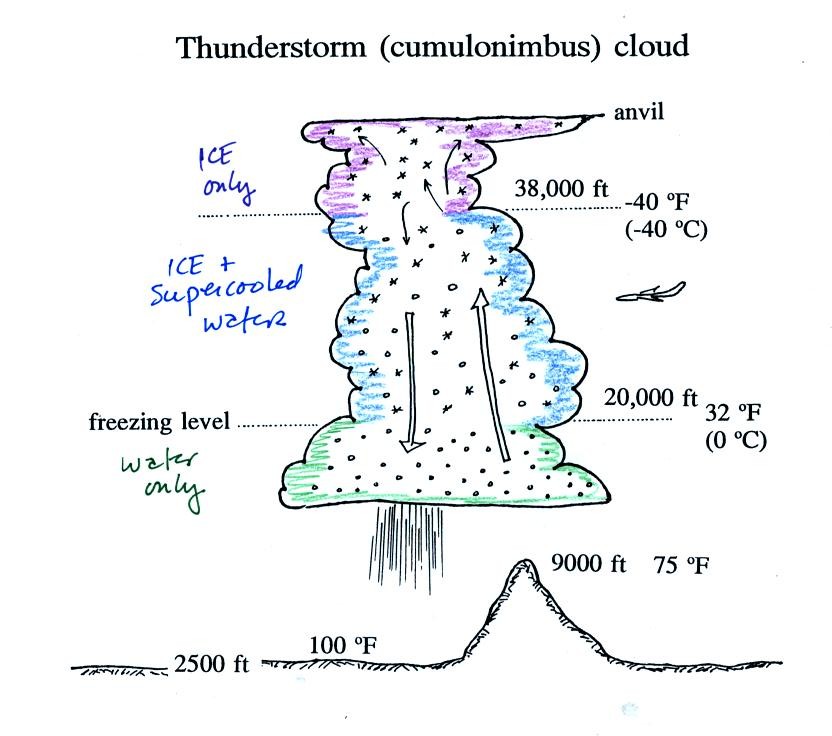
A typical summer thunderstorm in Tucson (found on p. 165 in the
photocopied Classnotes). Remember that
even in the summer
a large part of the middle of the middle of the cloud is found at below
freezing temperatures and contains a mixture of super cooled water
droplets and ice crystals. This is where the ice crystal process
of precipitation formation operatures and is also where electrical
charge is created. Doesn't it seem a little unusual that
electricity can be created in such a cold and wet environment?

A couple of interesting things that can happen at the ground when
the
electrical forces get high enough. Attraction between positive
charge in the ground and the layer of negative charge in the cloud can
become strong enough that a person's hair will literally stand on
end. This is incidentally
a dangerous situation to be in as lightning might be about to
strike. St.
Elmo's
fire
is a faint
electrical discharge that sometimes develops at the tops of elevated
objects during thundestorms. It was first observed coming from
the tall masts of sailing ships at sea (St. Elmo is the patron saint of
sailors).
The
following figure is on p. 166 in the photocopied ClassNotes.
Most cloud to ground discharges begin with a negatively-charged
downward-moving stepped leader. It makes its way down toward the
cloud in 50 m jumps that occur every 50 millionths of a second or
so. Every jump produces a short flash of light. An upward
discharge is initiated when the stepped leader nears the ground.
A powerful return stroke travels back up the channel (and out into all
the branches) once the upward discharge and the stepped leader
meet. These three steps are shown in additional detail below.
A sequence of stepped leader steps. Each of the
channels in the drawing should actualy be superimposed on each
other. This is what you would see if the film were moving so that
each new step was photographed in a slightly different position on the
film
Several
positively charged upward discharges begin to travel upward from the
ground. One
of these will eventually intercept the stepped leader. This
is what determines what will be struck by the lightning. Lightning
doesn't really know what it will strike until it gets close
to the ground.
Lightning rods take advantage of this principle.
Houses with and without lightning rods
are
shown
above. When lightning strikes the house without a lightning rod
the powerful return stroke travels into the house destroying the TV and
possibly starting the house on fire.
A lightning rod is supposed to intercept the stepped leader and safely
carry the lightning current around the house and into the ground.
The
connection between the stepped leader and the upward discharge creates
a "short circuit" between the charge in the cloud and the charge in the
ground. A powerful current travels back up the channel from the
ground toward the cloud. This is the return stroke. Large
currents (typically 30,000 amps in the
first return stroke)
heat the
air to around 30,000K (5 times hotter than the
surface of the sun) which causes the air to explode. When you
hear thunder, you are hearing the sound produced by this explosion.
Here's a stepped
leader-upward connecting discharge-return
stroke
animation
We also watched a fast time resolved film of an actual
stepped leader (which I can't unfortunately put online). Here's a
pretty good
substitute that is on YouTube.
Many cloud-to-ground flashes end at this point. In
about 50% of cloud to ground discharges,
the stepped leader-upward
discharge-return stroke sequence repeats itself with a few subtle
differences.
A downward dart leader travels from the cloud to the
ground. The dart leader doesn't step but travels smoothly and follows
the channel created by the stepped leader (avoiding the
branches). It is followed by a slightly less powerful subsequent
return stroke that travels back up the channel to the cloud.
A normal still photograph would capture the
separate
return strokes
superimposed on each other. If you bumped or moved the camera
during the photograph the separate return strokes would be spread out
on the image.
The image above shows a multiple stroke flash consisting of 4 separate
return strokes.
There is enough time between separate return strokes (around 1/10 th
second) that your eye can
separate the individual flashes of light.
When lightning appears
to flicker you are seeing the separate return strokes in a multiple
stroke flash. The whole flash usually lasts 0.5 to 1 second.
Here are
some unusual types of lightning.
Occasionally a lightning stroke will travel from the
positive charge
region in the top of the thunderstorm cloud to ground. These
types of strikes are more common at the ends of storms and in winter
storms. This is probably because the top part of the cloud gets
pushed sideways away from the middle and bottom portions of the
cloud. Positive strokes are very powerful. They sometimes
produce an unusually loud and long lasting clap of thunder.
Here's an even rarer form of lightning. Lightning
sometimes starts at the ground and travels
upward.
Upward lightning is generally only initiated by mountains and tall
objects such as a skyscraper or a tower of some kind. Note the
discharge is different in another way also. These
discharges are initiated by an upward leader. This is followed by
not by a return stroke but by a more normal downward leader. Once
the 2nd leader reaches the ground, an upward return stroke travels back
up the channel to the cloud.
An in-class Optional Assignment was distributed and later
collected today. You may download it and
turn it in at the beginning of class next Monday for at least partial
credit.
